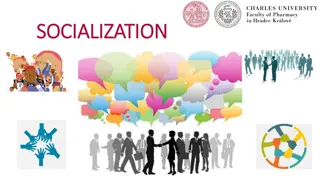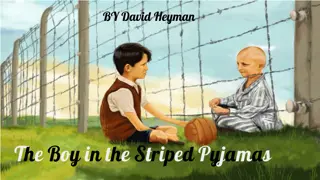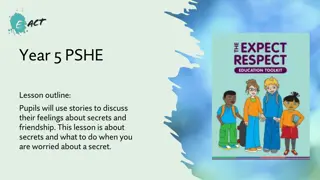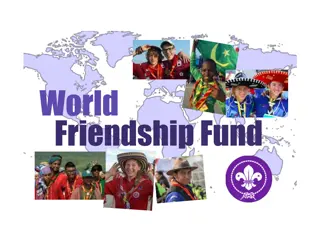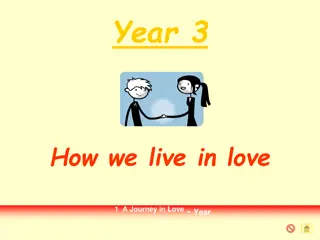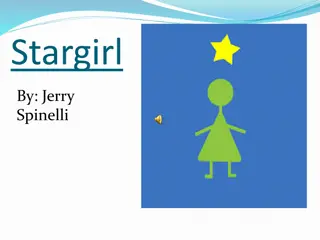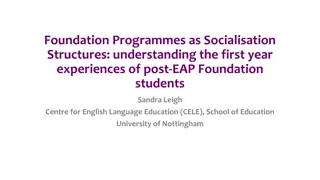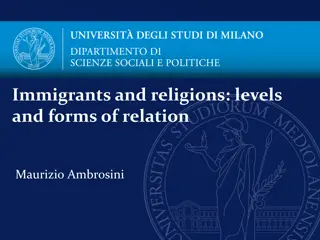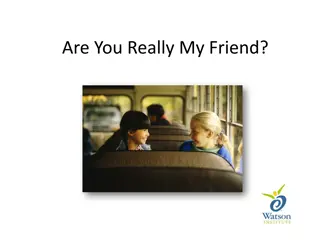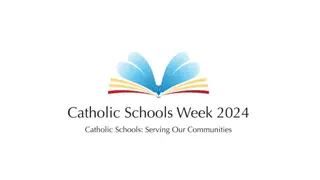Concept of friendship as a means of supporting socialization and personalization of children in kindergarten
The concept of friendship plays a crucial role in supporting the socialization and personalization of children in kindergarten. Through friendships, children learn important social skills and develop their individual identities. Curricular reforms in education focus on adapting to the changing needs of society, emphasizing lifelong learning and a shift towards decentralized curriculum. Integration of children with special needs in kindergartens promotes socialization in inclusive environments.
Download Presentation

Please find below an Image/Link to download the presentation.
The content on the website is provided AS IS for your information and personal use only. It may not be sold, licensed, or shared on other websites without obtaining consent from the author.If you encounter any issues during the download, it is possible that the publisher has removed the file from their server.
You are allowed to download the files provided on this website for personal or commercial use, subject to the condition that they are used lawfully. All files are the property of their respective owners.
The content on the website is provided AS IS for your information and personal use only. It may not be sold, licensed, or shared on other websites without obtaining consent from the author.
E N D
Presentation Transcript
Concept of friendship as a means of supporting socialization and personalization of children in kindergarten Milu e Ra kov , Dominika Prov zkov Stolinsk , Eva melov
Structure of speach - Theoretical basis - Trends - Reality Research -
Curricular reform - why reform? Development of society Reform pedagogical approaches came The basic school is criticized: Old school doesnt use new information and strategies of development of children It exists lot of new information in science fields The concept of man is changed Lot of knowledges encyclopedic style of learning non used with life Authoritative teacher and one type of curriculum for basic school in the whole CZ Inadeqvate condsideration to the individuality of child
Change with these aims Lifelong education Preparing for the future life Monitoring and assesing of educational quality Change the role of teacher Change from centralized to decentralized curriculum Change inside the school Inner and outer changes of school
Inner shift From transmisivity to constructivism From verbal to activity methods From directivity to partnership and communication From rivality to cooperation between children From quantitative to qualitative assesing of children with using narative methods From closed schools to opened one for family Children could have more competence up knowledges more understanding Outer change Change of school system No centralized curriculum but two levels of curriculum
Children in (normal) kindergartens according to the type of disability in the School Year 2017/18 Kindergartens In the Olomouc Region Children in (normal) kindergartens according to the type of disability Three waves of the changes Number of individually integrated children Number of children in special classes Total number of disabled children 27 1 28 Mental disability The czech school transformation (1989) Integration of children with special needs In the year 2008 were integrated 47,1 % of every children with special needs Closing special schools Inclusion amendment to the Education Act 1.9.2016 Benefits for every pupil Socialization in a real time and environment 9 0 9 of which medium-severe 2 0 2 of which severe 9 0 9 Hearing impairment 6 0 6 of which severe 0 0 0 Visual impairment 0 0 0 of which severe 15 142 157 Speech disorders 0 38 38 of which severe 13 0 13 Physical disability 2 0 2 of which severe 18 22 40 Multiple disabilities 0 0 0 of which deaf and blind 36 0 36 Autism 60 0 60 Developmental disorders 178 165 343 TOTAL
Internalization development of the concept of friendship and its effect on children s socialization In a kindergarten setting, two patterns of behaviour occur within the concept of internalization: - Social participation, in which children are rarely engaged in solitary play, and when children are left alone, they try to enter one of the ongoing episodic games of others. - Protection of interactive space; children tend to prevent other children from entering (e.g. during a game).
Researches in the international project - Inclusive Education no. 4401/11 - Institute for Research and Development at Faculty of Education - Palacky University, Olomouc, Czech Republic Research of teachers basic schools Sociometry in schools primary schools Research of pre-school children - actual
Research design Qualitative research Method interview with preschool children Aim - to find out what preschool children think about friendship in the context of emphasis on joint activities, satisfaction of their own needs and strengthening their own status Respondents - 33 pre-school children, aged 5 to 6 years old
1. Who belongs to your friends? A) One of the name of a friend / friend - 14 children B) The two mentioned names of a friend / friend - 10 children C) Three or more of the names of a friend / friend - 9 children Results: In terms of comradeship, our participants were oriented. Among their friends, they included exclusively their peers in various representation and in different gender assemblies. Illustrative selection of children's answers: Mat sek Tom J lek and Sofinka Raichov I'm a friend with Adam and Evka, and with Ditu ka and Tom ek
2. Why do you consider them to be friends? A) Common game of general interest - 15 children B) Joint game specifically designed (most often sports activities and games with toys) of 6 children C) Other reasons (eg helping, doing something together, etc.) - 10 children D) I do not know - 2 children Results: In order to justify our friendship, our participants have shared a common sharing in a variety of activities (most often in playing games) in general and concrete terms. They also mentioned other reasons that represented the area of positive behavior of children. Illustrative selection of children's answers: Because we play the most. Every day in kindergarten. Because I and Tomas Kornarik like to play football outside Because I play pretty with dice Because we help
3. What do you like to do with your friends? A) Common game / games of general interest - 4 children B) Joint game / games specifically designed (most often sports activities and games with toys) - 28 children C) Unanswered - 1 child Results: As part of a collaborative activity in the field of friendship, our participants clearly gave preference to playing games. Illustrative selection of children's answers: I play I play with Evi ka, with Terezka and Mark tka, because we always want to play pee-ka-boo and on the hunted and the fairies
4. What do you like about your friends? A) Case (most often clothes and ornaments such as t-shirts with prints, pins, chains with pendants etc. or games and toys such as dolls, Play stations, etc.) - 18 children B) Joint activity (most often sports and gaming) - 8 children C) Positive behaving (eg smiling, etc.) - 6 children D) I do not know - 1 child Results: A positive view of our friends combined our partners with the ownership of something most often with clothing, ornaments or toys; together with common activities and positive behavioral manifestations. Illustrative selection of children's answers: That P emek wears a dinosaur t-shirt I sometimes play with such a path that somebody puts it up and lets me do it and then I like to ride my cars. And then I get these wooden blocks straight and I put them together and that's all. That they do not kick me
5. Do you think it's important for you to have friends? A) Confirm without explanation - 8 children B) Consistent answer with explanation (joint games, joint activities - toys search, toy lending etc., exclusion of loneliness, manifestations of positive behavior to one another) - 21 children C) I do not know - 1 child Results: The importance of our friendship was perceived by our participants as a necessity to work together with others, not only in games but also in other activities. Illustrative selection of children's answers: Yeah Yeah. Otherwise, I could not play with anyone, and I would be alone. Because we have to play with, it's important I need them to come to visit me
Conclusion At pre-school age, children are able to make relationships with peers. The need for this relationship is the signal of a certain degree of maturity. A child of pre-school age has the choice of a friendships. Elementary relationships at pre-school age are usually symmetrical, in which both peers are equal, have similar competencies and status. Psychologically significant is the coincidence in the area of external signs and manifestations, the need for sharing of activity is intensified in children. Significant criteria at this age include contact with a particular person or persons from the circle of their peers; sharing them in a variety of activities (most often when playing games); pleasant exterior and positive behavior; owning a variety of things that children like or are similar to. At this age there is no handicap for the choice of a friend, children are not subject to social prejudices. It is important for the child to satisfy his / her own needs, while making friendship with emphasis on matching needs and interests.
Thank you for attention Dominika.Stolinska@gmail.com Palack University in Olomouc (CZE) Faculty of education Department of preprimary and primary education


